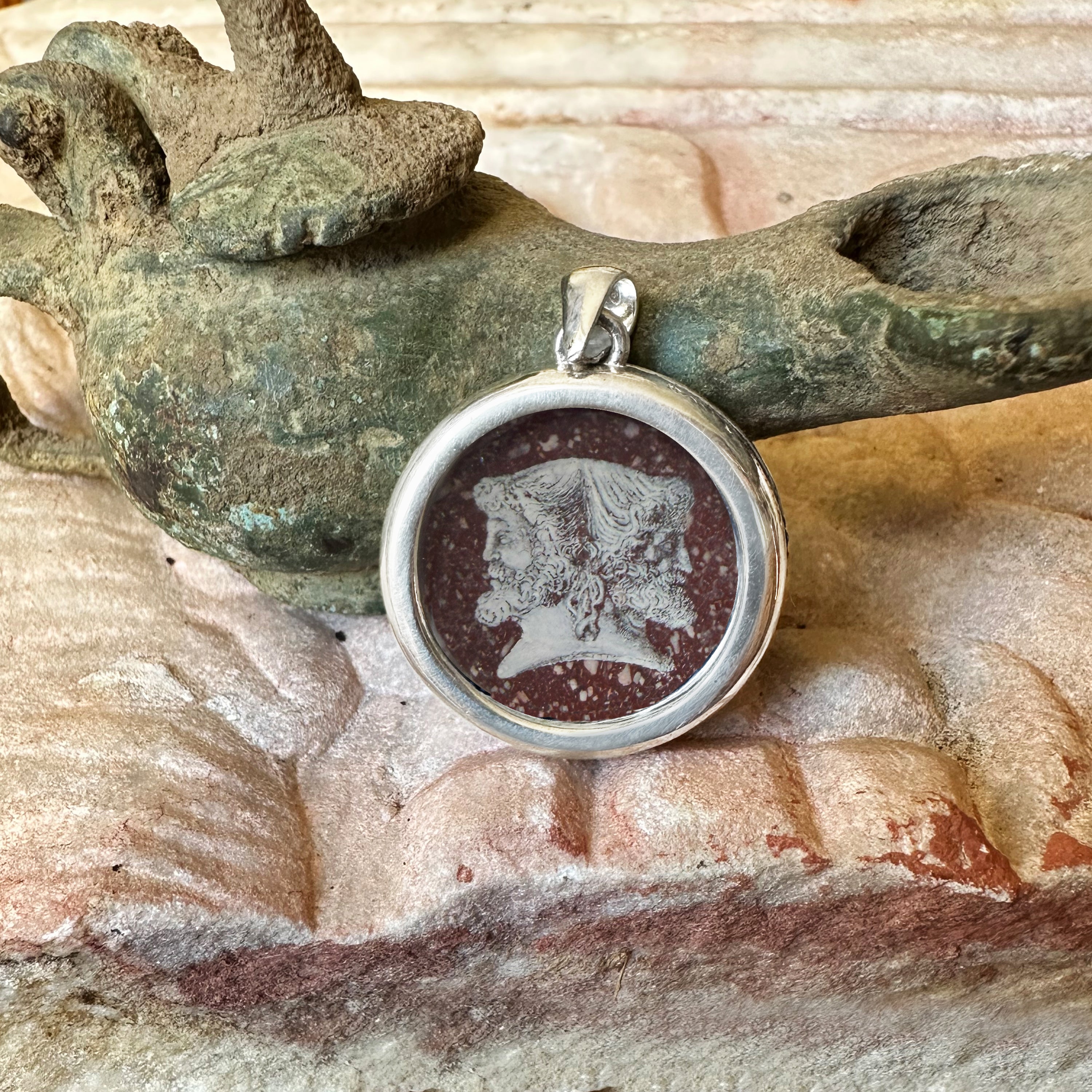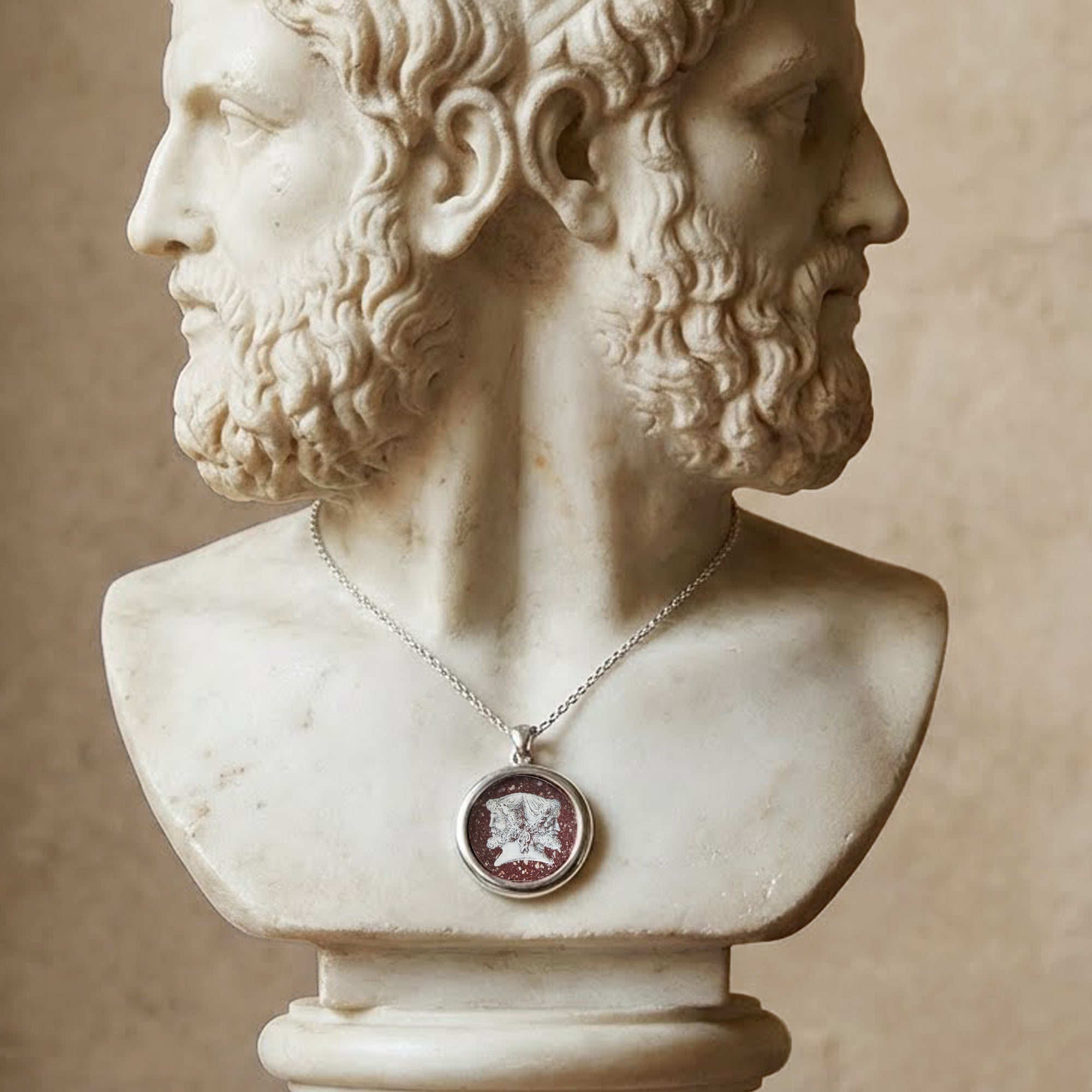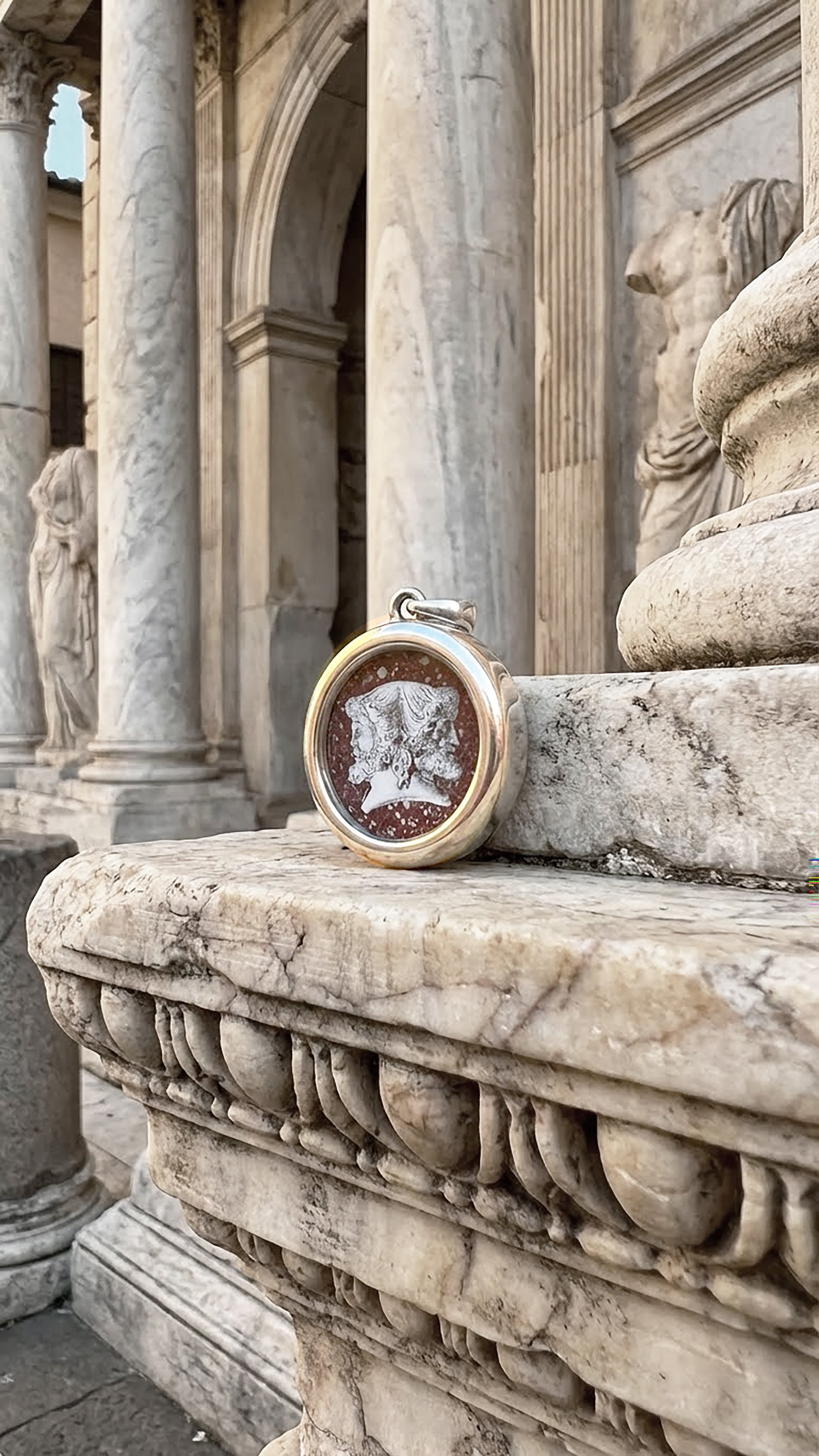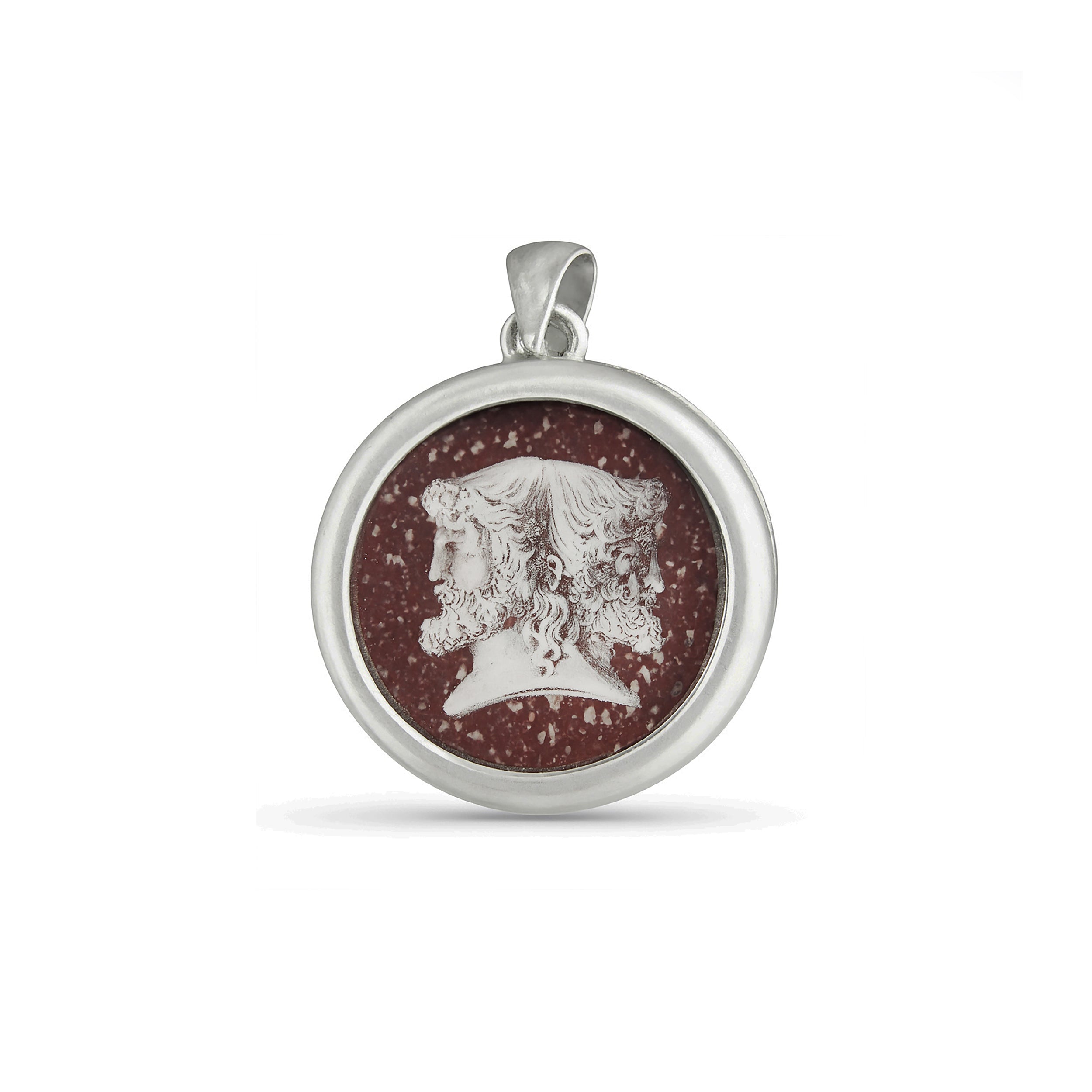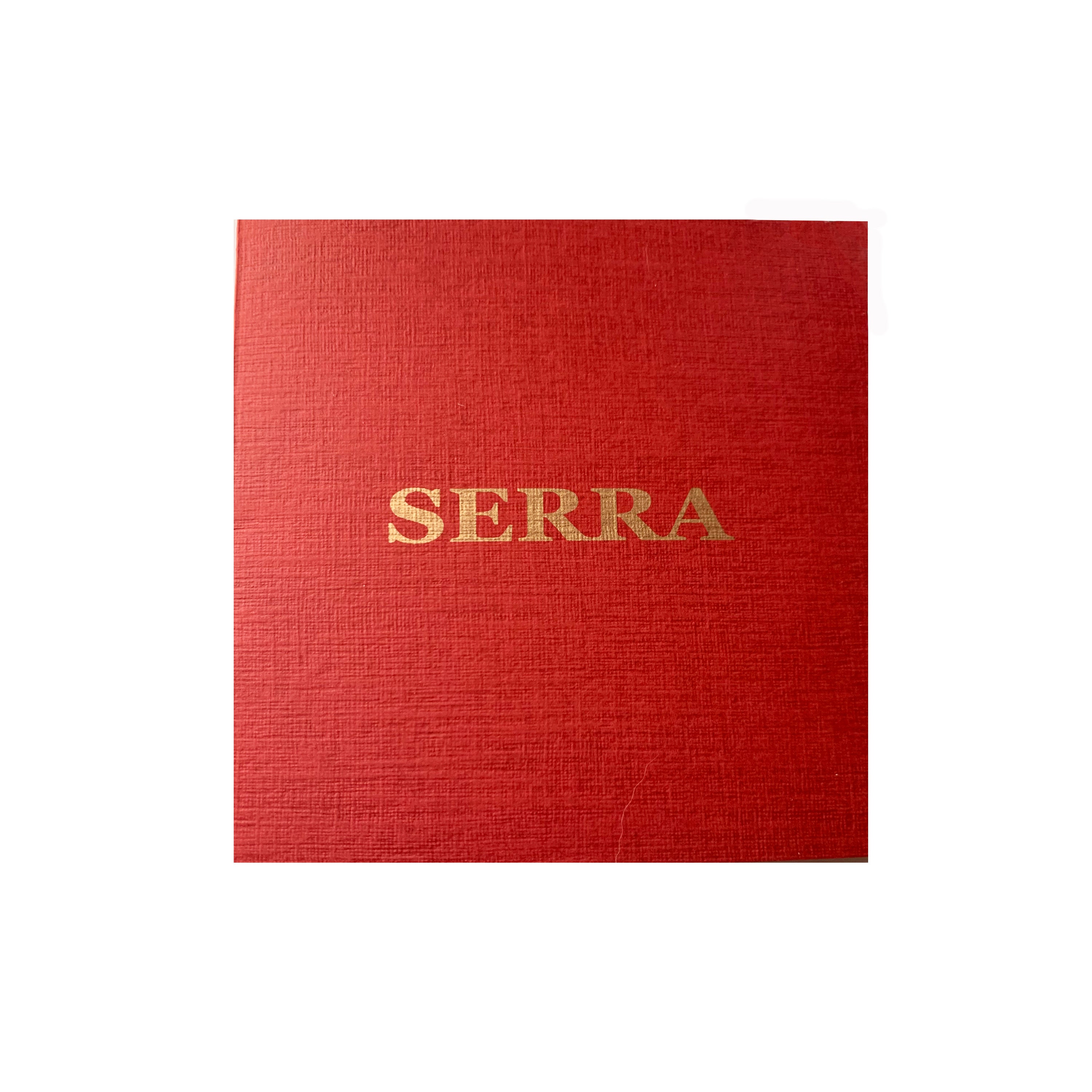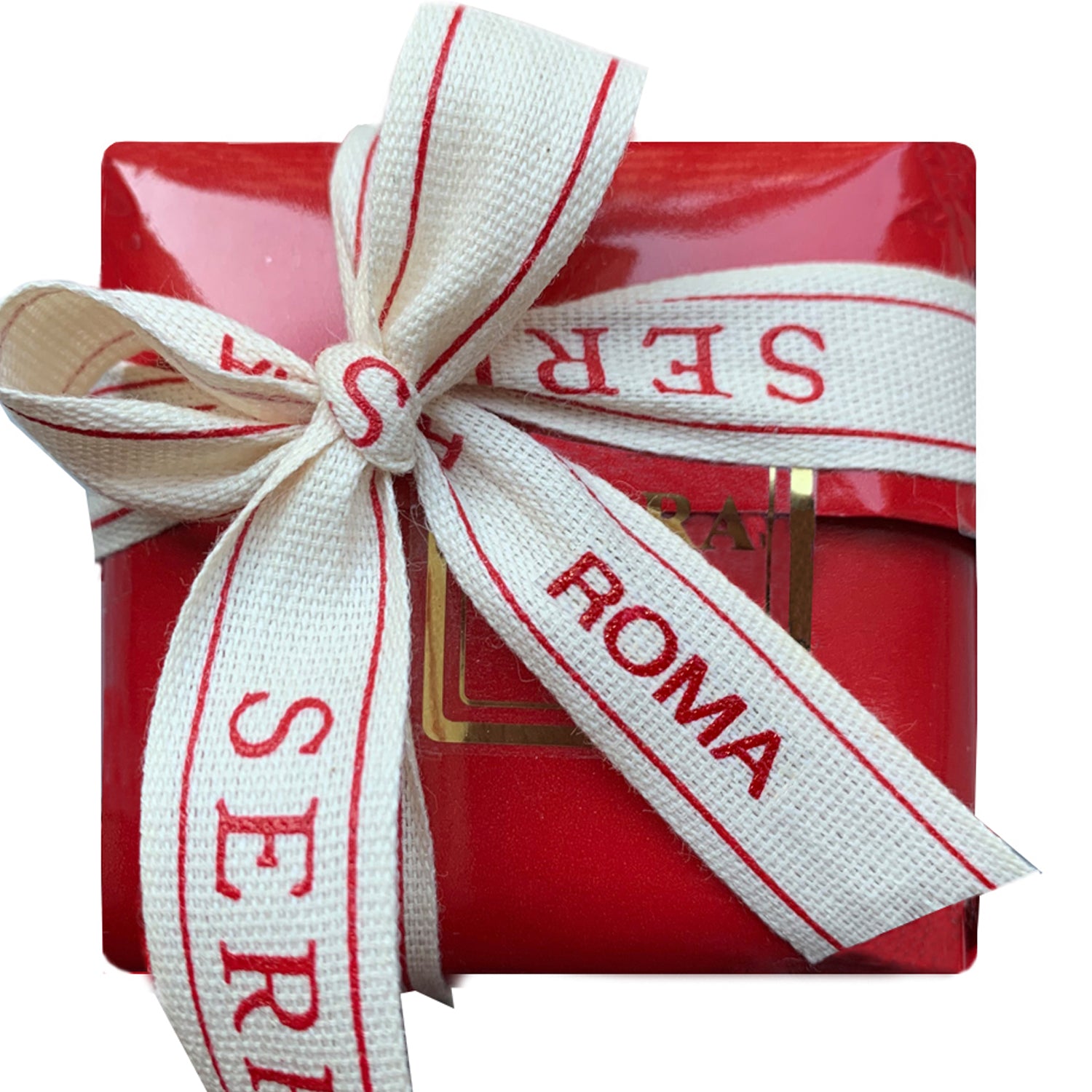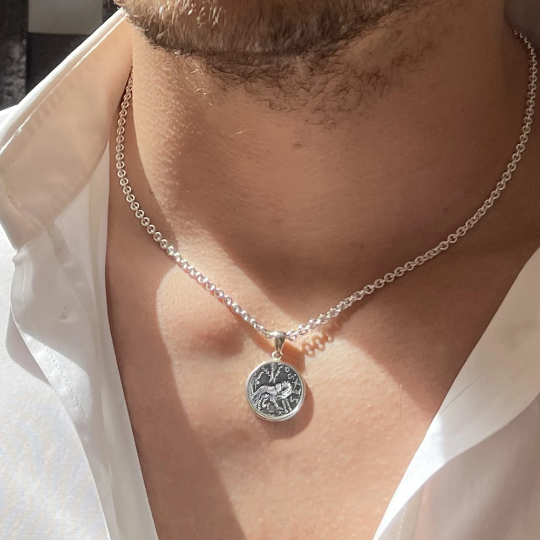GOD JANUS Hand-Painted Silver Pendant on Red Porphyry
This pendant features a hand-painted representation of the Roman god Janus, skillfully painted by the artist Tommaso Rossi on Red Porphyry. Known for its deep reddish-purple hue and association with imperial Rome, Red Porphyry brings a regal and historical depth to the piece. Set in solid silver, it captures the duality of Janus—the god of beginnings, transitions, and duality—traditionally depicted with two faces. The richness of the stone enhances the artwork’s intensity, while the silver setting adds a refined elegance. This pendant merges Roman mythology with masterful craftsmanship, creating a meaningful and visually striking piece of jewelry.
Janus, a pivotal god in Roman mythology, symbolized beginnings, transitions, time, and duality. With his two faces looking to the past and the future, he presided over moments of change—war and peace, trade and travel. Revered as Ianus Pater ("Janus the Father") and the "god of gods" during thresholds and transitions, Janus is one of Rome’s oldest deities. According to legend, he was once a king of Latium who brought civilization to its people, founded a city on the Janiculum Hill, and fathered Tiberinus, god of the Tiber River, with the nymph Camese. He is also said to have welcomed Saturn to Latium, ushering in a golden age.
Tommaso Rossi is the talented young artist who creates these exquisite miniature portraits and mythical stories. Working on both marble and hard stone discs, he depicts historical and mythical figures from ancient Greece and Rome, using paints such as enamels, titanium acrylics and graphite. In his amazingly detailed technique, Tommaso employs either an echidna quill or a rose thorn instead of a brush to define the figures on these miniature masterpieces.
Born in Rome in 2000, Tommaso first attended art school on Via Ripetta and then, recognized for his superior talent, he entered the prestigious “Scuola dell’Arte della Medaglia”. This is an elite art school in Rome where only a small number of the finest young artists are carefully chosen for further training in the arts of engraving and plastic modeling.
For more than a century, exceptional artists have acquired additional skills through the use of ancient techniques, innovative methodologies, design and craftsmanship. Importance is also given to art history and conservation. Classical traditions are reimagined, merging Antiquity with present day culture.

